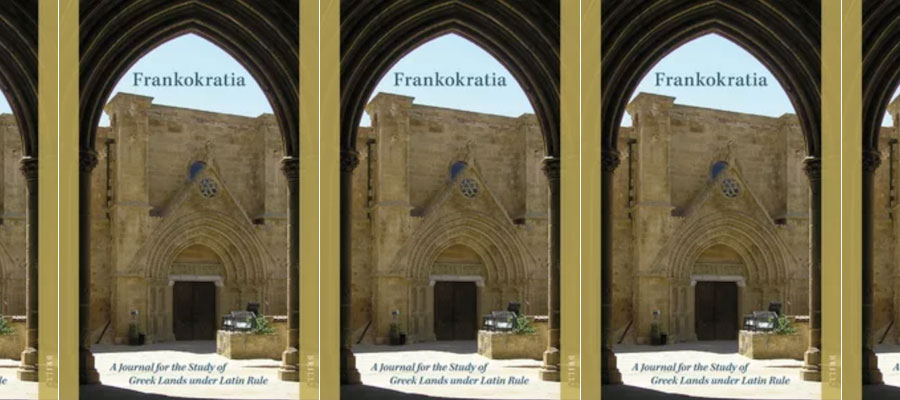Frankokratia, volume 3, issue 1 (May 2022).
CONTENTS INCLUDE
The Cypriot Peasant Revolt of 1426: Mentalities and Resistance in the Eastern Mediterranean
Chrysovalantis Kyriacou
The Cypriot Peasant Revolt of 1426 represents a unique expression of peasant resistance during the period of Frankish rule in Cyprus. The island’s Mamluk invasion in 1426 was followed by the defeat and capture of King Janus of Lusignan at the Battle of Khirokitia and the subsequent sack of Nicosia; upon the Muslim withdrawal, the peasants took up arms against the Frankish nobility, establishing their own hierarchy and proclaiming a peasant king: Alexis the serf. Based on the little information we possess on the event, this paper attempts to understand the nature of the revolt by transcending the methodological dichotomy of pure ethnic/national vs. pure class/social conflict.
The Modern Construction of a Late Medieval Hero: “King” Alexis and Revolts in Lusignan Cyprus
Gilles Grivaud, Angel Nicolaou-Konnari, and Philippe Trélat
Because the subject of the previous contribution, Chrysovalantis Kyriacou’s “The Cypriot Peasant Revolt of 1426. Mentalities and Resistance in the Eastern Mediterranean,” is complex, controversial, and current in Cypriot politics and society, the author, the journal editors, and the three external readers agreed to reveal their identities and to establish a dialogue in the following manner: once Dr Kyriacou had revised his paper on the basis of the comments of the referees, they would write a companion article from their perspective. In this response, Grivaud, Nicolaou-Konnari, and Trélat argue that, given that the absence of revolts led by the Greek population of Cyprus during the island’s Lusignan rule (1192-1474/89) has fuelled many debates amongst scholars, it is not surprising that the so-called “Cypriot Peasant Revolt” of 1426-1427, an unicum, acquires the characteristics of mythology if interpreted to represent the emergence of the Greek peasantry as a political actor, inspired by the intention to overturn the equilibrium established on the island since Richard the Lionheart’s conquest. They thus offer what they term a detached assessment of the meagre historical evidence.
Architecture, Sculpture, and Apostolate at the Dominican Church of Negroponte
Michalis Olympios
The present article endeavors to examine a decidedly understudied ensemble of early-fourteenth-century architectural sculpture gracing the interior of the church of the Dominican friary in the town of Negroponte, i.e. modern Chalkis on the island of Euboea. This building, now dedicated to Agia Paraskevi, has preserved a remarkable series of delicately carved corbels in the lateral chapels at its eastern end, together with an extremely elaborate set of sculpted archivolts assembled to form the triumphal arch of the cappella maggiore. After a brief discussion of the sculptures’ probable date and place within the cultural context of Lombard and Venetian Negroponte, the essay turns to the iconography of the diminutive figures emerging from the foliage on the triumphal arch archivolts. Representing not only the order’s venerable saintly patrons but also members of diverse social classes and even outcasts, such as the Jews, these sculptures appear to articulate a message of universal validity concerning the apostolic mission of the Friars Preacher that transcended the cultural landscape of medieval Greece, enriching scholarly discourse on the art of both the Dominicans and the Latin East.
